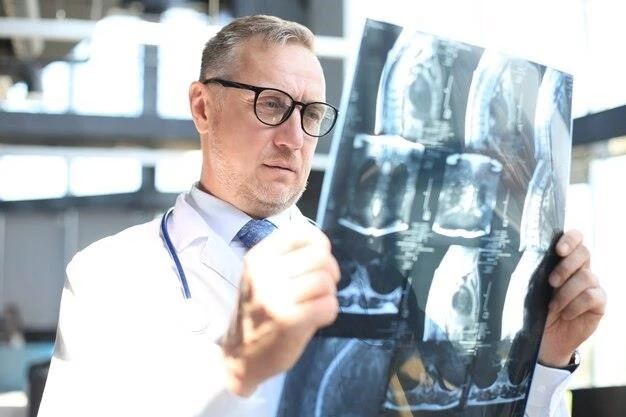Introduction
Damage to the brachial plexus can arise following surgery or radiation․ Brachial plexopathy manifests clinically as neuropathic pain, paresthesias, or motor weaknesses of the upper extremities and can cause significant morbidity; Radiation-induced brachial plexopathy (RIBP) is a late toxicity that can present months to years following a course of radiotherapy․
Overview of Radiation-induced Brachial Plexopathy
Radiation-induced brachial plexopathy (RIBP) is a late toxicity that can present months to years following a course of radiotherapy; It is associated with three distinct clinical syndromes⁚ classic delayed radiation injury or radiation fibrosis, reversible or transient plexopathy, and acute ischemic plexopathy․ The incidence of RIBP has decreased over the years due to advancements in irradiation techniques․

Clinical Manifestations
Radiation-induced brachial plexopathy presents with neuropathic pain, paresthesias, and motor weakness in the upper extremities․ The condition can significantly impact patient morbidity and quality of life․
Neuropathic Pain and Paresthesias
Radiation-induced brachial plexopathy can manifest as neuropathic pain and paresthesias in the upper extremities․ This can cause significant discomfort and affect the quality of life of affected individuals․
Motor Weakness of Upper Extremities
Radiation-induced brachial plexopathy can lead to motor weakness in the upper extremities, affecting the patient’s ability to perform daily activities․ This weakness is often associated with the radiating shoulder and axilla pain seen in this condition․
Causes of Radiation-induced Brachial Plexopathy
Radiation-induced brachial plexopathy can be caused by factors such as radiation dose, technique, and concomitant chemotherapy during treatment for underlying tumors․ The specific regions targeted for radiation, such as the chest, neck, or axillary region, play a crucial role in the development of brachial plexus injury․
Role of Radiation Dose
Radiation-induced brachial plexopathy can be influenced by the radiation dose administered during therapy․ Higher doses, especially exceeding 6000 cGy, are more likely to lead to plexopathy․ The specific areas targeted for radiation treatment also play a significant role in the development of brachial plexus injury․
Impact of Technique and Concomitant Chemotherapy
The technique used during radiation therapy and the administration of concomitant chemotherapy can impact the development of radiation-induced brachial plexopathy․ Proper planning and execution of these treatment modalities are crucial to minimize the risk of brachial plexus injury․
Radiation-induced brachial plexopathy is linked to classic delayed radiation injury, reversible or transient plexopathy, and acute ischemic plexopathy․
Clinical Syndromes Associated with Radiation-induced Brachial Plexopathy
Radiation-induced brachial plexopathy is linked to classic delayed radiation injury, reversible or transient plexopathy, and acute ischemic plexopathy․
Reversible or Transient Plexopathy
Patients with reversible or transient plexopathy following radiation-induced brachial plexopathy may experience temporary neurologic symptoms that can improve over time with appropriate management․
Acute Ischemic Plexopathy
Acute ischemic plexopathy is a clinical syndrome associated with radiation-induced brachial plexopathy․ This condition involves a sudden lack of blood flow to the brachial plexus, leading to potentially severe neurologic symptoms that may require immediate medical attention․
Diagnosis and Differential Diagnosis
MRI is used to distinguish brachial plexopathy due to radiation and differentiate it from tumor recurrence․
Use of MRI for Distinguishing Brachial Plexopathy
Magnetic Resonance Imaging (MRI) is a valuable diagnostic tool used to differentiate radiation-induced brachial plexopathy from tumor recurrence, aiding in accurate diagnosis and treatment planning for patients presenting with symptoms of brachial plexopathy․
Differentiating from Tumor Incidence or Recurrence
Magnetic Resonance Imaging (MRI) is crucial in differentiating radiation-induced brachial plexopathy from tumor incidence or recurrence, aiding in accurate diagnosis and appropriate treatment strategies for patients presenting with upper extremity symptoms․
Radiation-induced brachial plexopathy may present with distally radiating shoulder and axilla pain․ Weakness along myotomes and dermatomes․
Distally Radiating Shoulder and Axilla Pain
Patients with radiation-induced brachial plexopathy may experience pain that radiates distally from the shoulder and axilla, indicating brachial plexus involvement․
Presentation and Symptoms
Radiation-induced brachial plexopathy may present with distally radiating shoulder and axilla pain, indicating brachial plexus involvement․ Additionally, weakness may be observed along the myotomes and dermatomes of the upper extremity․

Treatment Approaches
Omentoplasty and symptom management with medications are common approaches for radiation-induced brachial plexopathy․
Omentoplasty for Radiation-induced Brachial Plexopathy
Omentoplasty, a surgical procedure involving the use of omental tissue, is a chosen intervention for managing radiation-induced brachial plexopathy․ This approach aims to address symptoms and improve the quality of life for affected individuals․
Management through Symptom Control and Medications
Management of radiation-induced brachial plexopathy involves a comprehensive approach focusing on symptom control and the use of medications to alleviate neuropathic pain and improve arm function․ This strategy aims to enhance the quality of life for individuals affected by this condition․
Risk Factors and Incidence
Radiation therapy for breast, head and neck, and lung cancers is associated with the risk of radiation-induced brachial plexopathy, a rare but increasingly recognized long-term complication requiring attention․
Relationship to Radiation Therapy for Breast, Head and Neck, Lung Cancers
Radiation therapy for breast, head and neck, and lung cancers is a significant risk factor for the development of radiation-induced brachial plexopathy․ Regular monitoring and early intervention are crucial for addressing this complication associated with cancer treatment․
Rare but Increasingly Recognized Long-term Complication
Radiation-induced brachial plexopathy is a rare but increasingly recognized long-term complication associated with radiation therapy for breast, head and neck, and lung cancers․ It requires early detection and appropriate management to minimize its impact on patient outcomes․
Surgical Interventions
Neurolysis with flap coverage is a common surgical intervention for managing radiation-induced brachial plexopathy․ Success rates in managing this condition vary based on individual patient characteristics and clinical presentations․
There are no entries under the subheading ‘
Neurolysis with Flap Coverage
‘ in the provided information․
There are no entries under the subheading ‘
Success Rates in Managing Radiation-induced Brachial Plexopathy
‘ in the provided information․
Future Directions and Research
Exploring novel treatment modalities and conducting long-term follow-up studies are essential for improving the management and quality of life assessments of patients with radiation-induced brachial plexopathy․
Exploring Novel Treatment Modalities
There is no new data available on the Internet for the topic ‘Disease⁚ Radiation-induced brachial plexopathy’ at this time․
There are no entries under the subheading ‘
Long-term Follow-up Studies and Quality of Life Assessments
‘ in the provided information․
